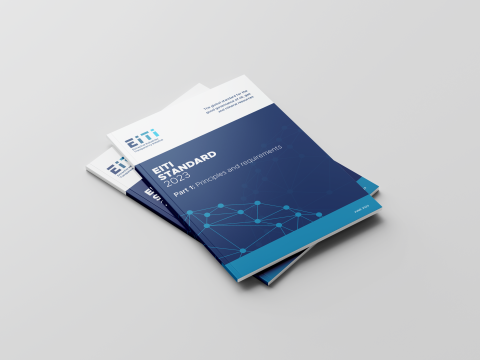
Getting down to the small-scale mining level in Ethiopia
Getting down to the small-scale mining level in Ethiopia
How EITI can help identify and address challenges in artisanal and small-scale mining.
Artisanal and small scale mining (ASM) provides a livelihood for millions of people in several resource rich developing countries and is a major source of economic development for many rural and regional communities.
ASM is the manual extraction of minerals by artisanal and small-scale miners. The manual miners often dramatically outnumber their counterparts in the industrial sector. As most ASM activity is informal or illegal in nature, production can often be clandestine and hidden from official view. The ease of quantification of production is often linked to the level of informality of the sector, levels of illegal trade, and nature of the materials extracted.
Lack of data, lack of oversight
The lack of information and understanding about the scope and nature of ASM has been one of the key challenges for improving governance of the sector. Collecting detailed and reliable information about scale, dynamics and economics can be challenging, and the scant data available is often not well stored and rarely used for policy-making purposes.
The true value of ASM in a country has rarely been captured. In the past, the sector has not been covered by EITI reporting because the payments and revenues from the sector have typically been small. However, the EITI requires that an estimate of informal sector activity and its contribution to the economy is disclosed. The EITI increasingly seeks to provide a more comprehensive picture of the contribution of all mining sector activities to the economy. Countries like Afghanistan, Central African Republic, Colombia, DRC, Ethiopia, Ghana, Liberia, Madagascar, Mali, Mongolia, Niger, the Philippines, Senegal, Sierra Leone and Togo have published estimated figures as well as non-revenue information on the sector that includes details on the relevant legal framework, fiscal rates, licensing and estimated production and export figures. Experiences so far suggest that the inclusion of ASM in the EITI process has the potential to increase citizens’ awareness of the sector’s activities and some of the associated issues, and can support an evidence-based debate on the costs and benefits of ASM.
Using EITI to address ASM challenges
Some countries with significant ASM activities including Ethiopia, Tanzania and Zambia have included representatives from the ASM sector in their multi-stakeholder groups (MSG) as members or observers. In Ghana, the MSG is having discussions with ASM representatives. The small-scale miners in Ghana see the EITI as an opportunity to work towards creating a level playing field between the large-scale and ASM sectors, and a platform for exposure and better understanding of the sector. According to the representatives, EITI reporting can also help provide more clarity on the fiscal provisions and ensure consistency in applied tax rates and records of tax paid.
EITI reporting can provide an overview of ASM activity, production, export and revenue data, quantitative data about the sector, links to existing sources of information, description of initiatives underway in a country to support ASM development. By helping to provide more comprehensive and reliable information about the sector, EITI has the potential to help the government to engage efficiently with the necessary stakeholders to develop sustainable policies and improve government oversight of the sector.
Ethiopia’s quest to cover ASM
Ethiopia is one of the EITI countries that is making efforts to formalise the ASM sector by licensing individual miners, providing technical support for capacity building, setting up basic infrastructure and facilitating formalised marketing of gold. For instance, ASM specific laws have been established to better address the sector and the National Bank has been set up as a buying agent for gold produced by small-scale miners.
In addition to providing an overview of ASM in its first report, Ethiopia EITI has conducted a study focussing on ASM to help understand the main challenges of the sector. This special report seeks to analyse aspects of ASM operations in Ethiopia, its economic value, social contribution and impacts by studying the ASM value chain. It provides key relevant information along the ASM value chain (from the legal framework and licensing, to estimates of production, revenue and economic contribution) and included key findings:
1. More people than previously estimated are likely to be involved in ASM activities: The government has estimated that between 300,000 to 350,000 people are engaged in artisanal and small-scale gold mining, while five to seven million people are believed to depend on mining for their livelihood. However, based on consultations and the data collected at the regional government offices, the number of artisanal and small-scale miners of gold and opal in the major producing areas alone is estimated at about 1.26 million people.
2. The majority of ASM activities (production and marketing) is informal: About 94% of the artisanal and small-scale miners are non-licensed, which results in disadvantages for the minority that holds licenses in terms of restricting the area of their activities. This encourages licensed small-scale miners to shift to informal and in some cases illegal activities. The study also explains both the legal and illegal marketing processes, and estimates that more than 60% of total production is marketed by informal traders.
3. Lack of oversight and poor management of licensed areas: There has been limited monitoring of areas licensed to artisanal and small-scale miners and in some areas, large-scale private miners have officially been allocated the same sites as artisanal miners. This has in some cases resulted in conflicts between artisanal and large-scale miners due to overlapping activities.
4. Gaps in the legal framework and significant need to improve enforcement of regulations related to ASM: The study points out flaws in the existing laws related to the sector, and calls for legal revisions and for improved enforcement. There appears to be a lack of government monitoring and oversight in particular with regards to licensed areas.
5. Significant potential for the government to improve its take of royalty from ASM production: Based on estimates of production and actual royalties collected, the EITI Report indicates that only 36% of potential royalties were collected in 2014. The study shows how royalty rates vary across the regions and points out that the missing data on actual production by both legal and informal miners makes it difficult for the government to know how much in royalties could have been collected.
6. Lack of consistent information about prices: This is in particular with regards to the commodities not marketed by the National Bank (such as opal and tantalum), and is a great disadvantage for miners in relation to the buyers.
What can other countries learn?
The study suggests the following next steps for including of ASM in the scope of EITI reporting which can be relevant for other implementing countries:
- Establishing regular reporting mechanisms for ASM data as well as disclosure and dissemination of information to help inform policies and activities in the sector.
- Increasing awareness of ASM as a formal and significant source of income for the government, rather than just being regarded as a short-term and sporadic economic activity.
- Consulting with relevant government bodies and providing training on methods for collecting data on ASM.
- Establishing links to regional offices that monitor ASM activities at the local level for improved and timelier data management.
Although the ASM study provides a more comprehensive overview of the sector than what has been previously available, it also demonstrates the challenges related to ASM data collection and significant information gaps. There is little information publicly accessible for the people engaged in the sector, record keeping is lacking and the quality of existing information is poor due to reliance on estimates. Nonetheless, early experiences from reporting on ASM activities can help map out the key challenges and next steps for both the government and stakeholders in the EITI process.
Read the Ethiopia EITI study “Artisanal Mining Operation and Its Economic Values, Ethiopia”: https://eiti.org/node/7429
The EITI has in collaboration with the World Bank developed a guidance note for implementing countries on including ASM in EITI reporting: https://eiti.org/GN21





